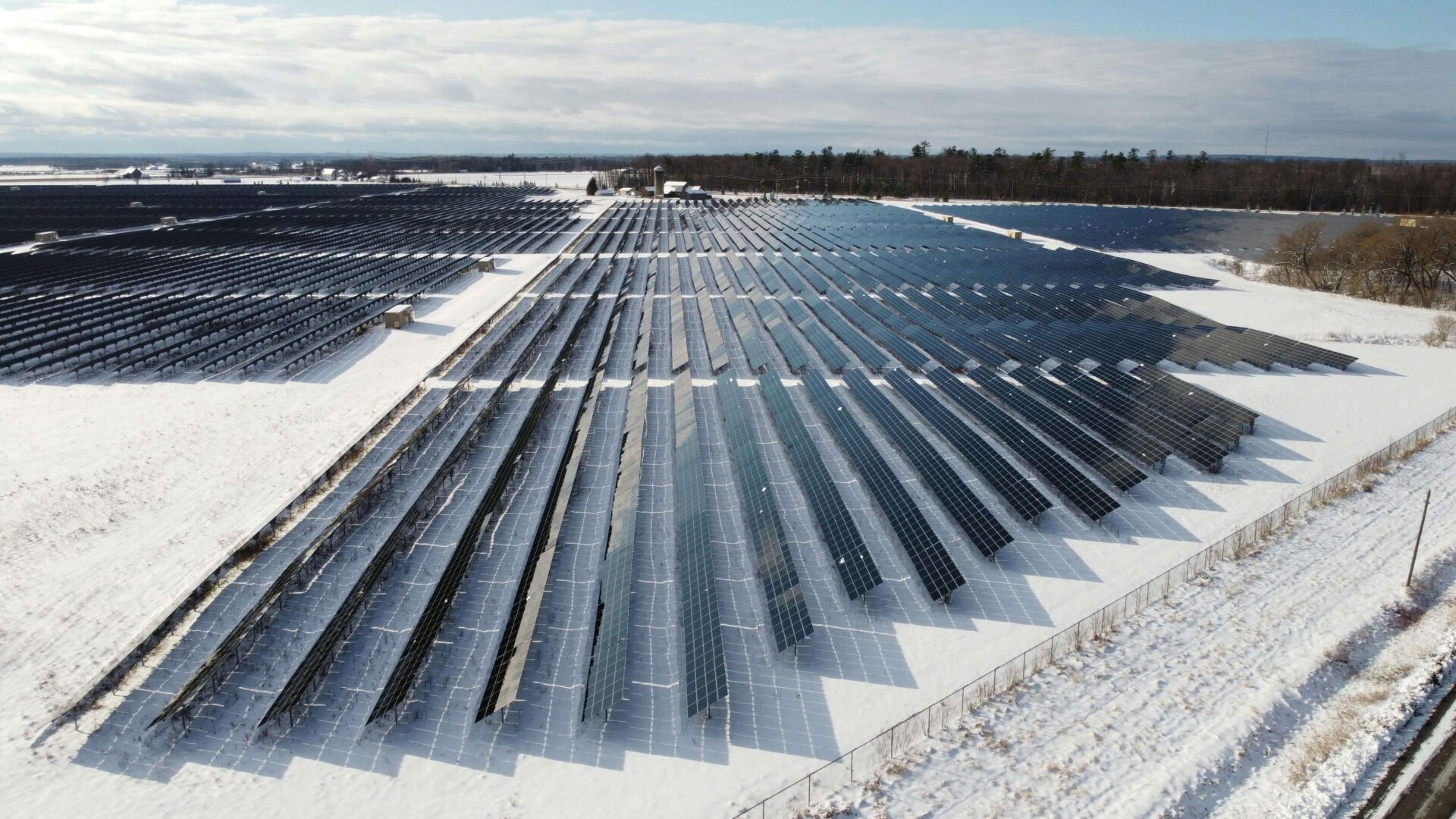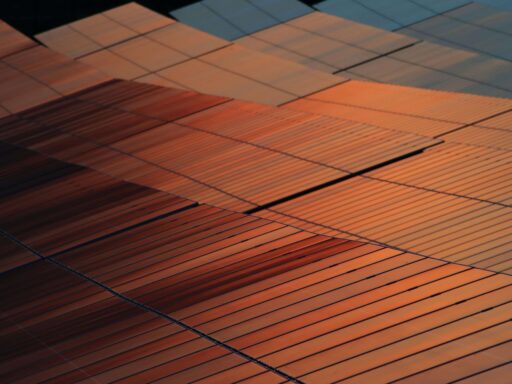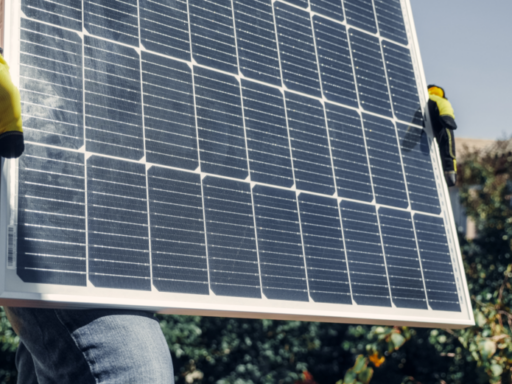Transparent solar panels are moving from lab demos to real installations on facades, skylights, and window glass. This guide explains how the technology works, what performance to expect, where transparent solutions fit best, and how to evaluate glass products available now. It is written for installers, designers, and project teams who want clear information to plan and specify systems with confidence.
You will find plain-language definitions, comparisons with traditional solar panels, and pointers for requesting the right data from suppliers before you commit to a design. The aim is to give you a reliable starting point so you can evaluate options and document choices with confidence.
What are transparent solar panels?
Transparent solar panels are glass products that generate energy while remaining see through or semi-transparent. Unlike traditional solar panels, transparent designs balance two goals. They transmit visible light for daylighting through architectural glass, and they harvest non-visible wavelengths to generate electricity.
In practice, most transparent solar panels today are semi-transparent modules or insulated glazing units with photovoltaic elements laminated inside the glass. The result looks like ordinary glass yet functions as solar panels. On refurbishment projects, transparent solar panels can upgrade envelopes without major structural changes because the glazing package is doing the work.
How transparent PV works?
Transparent PV reaches this outcome via two routes. One route uses selective absorbers and transparent electrodes that capture ultraviolet and infrared, while visible light passes through clear glass. Examples include organic photovoltaic coatings and transparent luminescent solar concentrators, sometimes described as colourless concentrators, that guide light to edge-mounted cells for conversion into power.
The other route spaces crystalline cells, uses micro-patterned thin films, or perforates active layers to create semi-transparent modules that admit light while still delivering useful power. Both aim for window-like clarity with controlled efficiency, so the glass remains comfortable to look through and the solar panels continue to generate electricity.
Always inspect full-size samples under natural light to confirm clarity, tint, and any moiré effects from cell spacing or patterns.
Difference between transparent, see-through, and traditional solar panels
- Transparent or see through solar panels transmit a high share of visible light and are designed for window and facade use where occupants expect clear views through glass.
- Semi-transparent solar panels are BIPV modules that admit light yet remain visibly tinted or patterned. They suit skylights, spandrels, canopies, balustrades, and other applications where glass is both enclosure and generator.
- Traditional solar panels maximise absorption for power and efficiency using opaque backsheets or dense glass laminates. They offer higher W per square metre but are not intended for vision windows.
Types of transparent solar panels and solar glass technology
Fully transparent modules (organic/TLSC, perovskite)
Fully transparent approaches let visible light pass while converting non-visible light to electricity. Organic photovoltaic coatings and transparent luminescent solar concentrator designs sit in this category, as do experimental perovskite transparent solar stacks tuned for selective absorption.
In a concentrator, the glass incorporates dopants that capture selected wavelengths and re-emit them towards the edges, where cells convert light into power. The long-term goal is solar glass that looks like vision glass while quietly generating energy.
Today, these solutions appear in pilots and limited commercial deployments. Where they are used, the value is as much architectural as electrical because they maintain uniform sightlines.
Semi-transparent modules (see-through BIPV glass)
Semi-transparent modules are today’s workhorse of transparent solar panels. Manufacturers use strips of crystalline cells, thin-film layers, or micro-perforations to balance daylighting with power. Because the modules are housed within laminated glass, the product serves as both structural glazing and a photovoltaic generator.
You can order glass solar panels with different visible-light transmittance levels to tune glare control, comfort, integration, and energy yield. When comparing suppliers, request identical pane sizes and orientations in estimates so energy numbers are directly comparable.
Transparent solar blinds, facades, and smart window systems
Transparent technology is not limited to windows. You will find transparent solar blinds that shade while producing energy, curtain-wall facades with semi-transparent modules, and smart window systems that combine low-e coatings, sensors, and photovoltaic layers.
When daylight targets align with power goals, transparent installations help buildings produce energy without losing outdoor views. Coordinate controls early to ensure that shading devices, daylight sensors, and PV wiring do not conflict at the head and jamb details.
Key specifications and performance of transparent solar panels
Efficiency and visible light transmittance (AVT)
Visible-light transmittance and efficiency pull in opposite directions. Higher transmittance means more daylight through the glass and less power per square metre from the solar panels. Product sheets publish transmittance bands such as 10%, 20%, or 30%, together with expected output at standard conditions.
Start with the transmittance your space needs, then select modules that meet daylight goals and still generate electricity. Include AVT once in technical schedules for clarity. On complex facades, mix transmittance levels by orientation to balance glare in offices and daylight in circulation areas.
Temperature coefficient and real-world power output
facade modules see different thermal and irradiance conditions than roof arrays. Check the temperature coefficients in the datasheet and the model output for the actual orientation and tilt. Vertical glass can run cooler at times, yet see fewer peak hours.
Skylight glass can receive higher irradiance and higher temperatures. Confirm assumptions with the supplier and include shading and integration details that affect power in everyday operation. Consider optimisers or stringing strategies that limit mismatch losses when facade zones experience different shading profiles.
Durability, lifespan, and weather resistance of solar glass
BIPV glass must comply with construction codes and electrical safety regulations. Check glass type, lamination, interlayers, insulated-glazing seals, wind and impact ratings, fire classifications, and ultraviolet stability.
Because the modules sit inside glass, mechanical protection is strong, and long service life is achievable when the glass build-up and junction details are specified correctly. Pay attention to edge treatments, junction box locations, and compatible sealants to ensure transparent solar panels install cleanly and sightlines remain clear. Request accelerated ageing and salt-mist test results if the site is coastal or exposed to industrial pollutants.
Applications of transparent solar panels in architecture
Transparent solar panels shine in applications where glass dominates the envelope. Curtain walls, atria, skylights, glass canopies, balustrades, and greenhouse structures are common early adopters. In tall buildings, the facade area often far exceeds the roof area. Even if each square metre of glass produces less power than roof solar panels, the total glass surface can generate meaningful energy.
Transport hubs and retail stores also benefit because long spans of glass can host generation while maintaining bright interiors. When architects, facade engineers, and installers coordinate early, transparent solutions let solar panels work quietly while the building keeps clear views and straightforward integration.
Leading transparent solar panel manufacturers and researchers in 2025
Use this list to start vendor outreach and due diligence. Availability and approvals vary by region.
- ClearVue PV: Vision glass and skylight systems designed to generate energy while moderating solar heat. Brochures include glazing data such as SHGC and visible transmittance. Request project references and details on junction box placement and wiring paths.
- Onyx Solar: Crystalline and thin-film BIPV glass with custom transmittance and detailed specifications for facades and walkable glass. Datasheets typically include mechanical properties, electrical output, and optical values so that design teams can evaluate trade-offs.
- Ubiquitous Energy: Fully transparent coating that harvests ultraviolet and infrared while preserving window-like clarity. Suited to projects that prioritise uniform appearance.
- NEXT Energy Technologies: Transparent OPV windows demonstrated at Patagonia’s headquarters and in subsequent pilots. For pilots, request performance-monitoring summaries and installation lessons learned.
- Brite Solar: Semi-transparent glass for greenhouses and agri-PV applications. Spectral profiles are tuned so crops receive useful light while the glass produces energy.
- Academic and R&D groups: Ongoing advances in perovskite stacks, transparent electrodes, and colourless concentrators aimed at higher efficiency with high transmittance. Track certification and durability milestones as these move from lab to field.
Transparent solar panels vs traditional solar panels
| Factor | Transparent or semi-transparent glass solar panels | Traditional solar panels |
| Appearance | Clear to tinted glass with defined transmittance bands for daylighting | Opaque or non-vision glass with no transmittance requirement |
| Power density | Lower per m² due to light transmission. Photovoltaic output depends on transmittance and technology | Higher per m². Optimised for efficiency and power |
| Placement | facades, skylights, atria, balustrades, canopies, greenhouses, where glass is already required | Roofs, ground mounts, carports |
| Temperature effects | Vertical mounting and facade microclimate affect output. Check the temperature coefficient and model on real surfaces | Well characterised for roof and ground arrays |
| Daylighting and solar control | It can reduce glare and heat while providing daylight. Visible-light transmittance and SHGC are key levers | Not used for vision windows. Daylighting is handled by separate glass |
| System integration | Works with BIPV mounting and IGUs. Wiring and boxes must suit window details and curtain-wall geometry | Standard racking and BOS with simpler interfaces |
| Cost context | Higher price per m² and per W in many markets. Value improves when glass replaces other facade materials | Lower cost per W where daylighting is secondary |
| Maintenance | Similar to cleaning facade glass. Plan safe access | Standard PV O&M routines |
Cost of transparent solar panels in 2025
Costs vary with visible-light transmittance, technology, certification, applications, and scale. Transparent solar panels and semi-transparent modules usually cost higher per W than roof PV, yet the glass can offset part of a facade package. For budgeting, request both per-square-metre and per-W pricing.
Include a balance system for facade routing, insulated-glazing handling, testing, and access. Ask suppliers for project references with similar glass sizes and transmittance so you can benchmark realistic output, power per area, and total installed price. Where budgets allow, include a small on-site mock-up to validate appearance, yield assumptions, and cleaning access before procurement.
Buying guide: how to choose the best transparent solar panels
A solid specification balances architectural intent with power generation.
- Set the transmittance target first. Choose bands that match each facade zone and interior glare goal. This keeps transparent choices aligned with priorities and makes assumptions clear.
- Ask for per-square-metre and per-W yield. Request expected power on the actual orientation and tilt. Include temperature coefficients and annual output modelling.
- Confirm the glass build-up. Specify lamination, interlayers, coatings, thickness, and insulated-glazing sealants. Verify wind, impact, and fire classes, and confirm integration details at mullions and frames.
- Plan electrical integration early. Check connector locations, edge-mounted strips, and junction-box details that work with frame systems so the solar panels install cleanly.
- Check certifications and approvals. Confirm building standards and electrical safety marks for your region before wider deployment in buildings.
- Review warranties and service. Validate warranty terms, replacement glass availability, service network, and test reports. Request a sample of vision glass with representative transparent photovoltaic layers before final approval.
- Look at examples available now. Vision glass, semi-transparent crystalline BIPV glass, and transparent OPV coatings all provide viable paths depending on clarity and power needs. If the project calls for solar windows, confirm performance at the intended orientation.
The future of transparent solar panel technology
The next wave of transparent research targets higher efficiency at high transmittance with materials suited to mass production. Work on perovskite stacks, transparent electrodes, and colourless concentrators aims to increase output without sacrificing clear views through glass.
As BIPV glass production scales and quality improves, costs should fall. Expect transparent solutions to complement traditional solar panels, with curtain-wall systems increasingly offering standard details for modules and cells. Over time, more products should appear in mainstream facade catalogues alongside clearer guidance for engineers and installers.
FAQ – transparent solar panels
Are transparent solar panels available for commercial use today?
Yes. Several vendors sell transparent solar panels and semi-transparent products for facades, skylights, and canopies. Availability and certification vary by region.
How efficient are transparent solar panels compared to traditional ones?
They are less efficient per square metre because some visible light passes through the glass. Practical efficiency depends on transmittance and technology. Align expectations to orientation, tilt, and shading.
How much do transparent solar panels cost in 2025?
They are generally more expensive than traditional solar panels per W. However, the cost per square metre can be competitive when the glass replaces other facade materials and integration reduces the need for separate cladding.
Can transparent solar panels power a whole building?
They can contribute meaningful on-site energy, especially on large facades. Most projects combine transparent glass with roof solar panels and energy-efficiency measures.
Are transparent solar panels durable and weather-resistant?
Yes. When specified and installed correctly, they withstand the rated wind, impact, and fire conditions and perform as stated in the datasheet. Ensure glass edges and junction boxes suit the facade system.
What are the advantages of see through or invisible solar panels?
Daylighting, reduced glare and heat, architectural integration, and on-site generation with preserved views.
Will transparent solar panels replace traditional ones in the future?
They will complement traditional solar panels. Transparent glass excels where dual-function facade modules make the most sense, while traditional solar panels remain the best choice for pure power density.
 EN
EN ES
ES DE
DE PL
PL IT
IT FR
FR GR
GR


